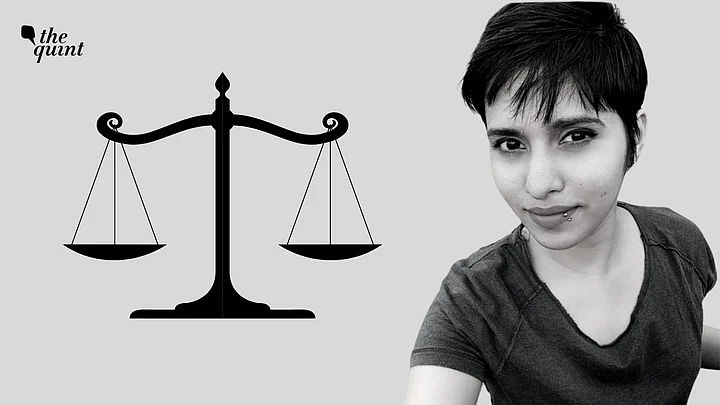Shraddha Walkar's murder, allegedly by her partner, has sent shivers down our spine. Not only because she is believed to have been killed by someone she knew and might have trusted, but also because of the grotesque cover-up that appears to have followed.
Aftab Poonawalla, Walkar's partner, is reported to have dismembered her mortal remains after murdering her, and slowly over months, buried them in different spots in Delhi's Mehrauli area.
There is now a loud unanimous cry for justice for Shraddha, and that cry must be heard. Unfortunately, this cannot happen unless the investigating authorities, and thereby the prosecution, perform their roles flawlessly.
REMEMBER THE CHHAWLA RAPE CASE?
In their order acquitting the Chhawla rape case accused – whom the lower court had sentenced to death – the apex court noted lapses in the investigation and trial and a lack of “cogent, clear and clinching evidence”.
The Supreme Court further noted:
“In order to sustain conviction, the circumstances taken cumulatively should form a chain so complete that there is no escape from the conclusion that within all human probability, the crime was committed by the accused only and none else. The circumstantial evidence must be complete and incapable of explanation of any other hypothesis than that of the guilt of the accused and such evidence should not only be consistent with the guilt of the accused but should be inconsistent with his innocence.”
BUT WHY?
This is because, in order to secure a conviction, the prosecution is mandated to prove their case beyond reasonable doubt. If unable to do so, the case is bound to result in an acquittal.
Thus as pointed out by Criminal Law expert Shrey Sherawat, “the chain of custody of evidence should be foolproof”.
Sherawat also noted that any DNA evidence collected during the course of investigation should be “meticulously and carefully collected and preserved.”
Further, any recovery made under Section 27 of The Indian Evidence Act must be unimpeachable. (Section 27 deals with provable information.)
In April 2022, the Supreme Court set aside the conviction of four people in a case related to the murder of a member of the Communist Party of India (Marxist) (CPI(M)), noting that there were discrepancies in the recoveries made under Section 27.
“There appears to be some anxiety on the part of the prosecution to make compulsory recoveries," the court had also observed.
AND WHAT IS CHAIN OF CUSTODY OF EVIDENCE?
Chain of custody essentially means the sequence or chronological order of procedures by which any evidence is collected, maintained, documented and handled. It is a critical process which lends integrity and legitimacy to all exhibited evidence.
The chain of custody includes the precise, step by step manner in which the statement of the accused is recorded, evidence is collected by the crime team, samples are sealed and marked etc. An investigating officer is expected to follow this strictly and meticulously, to ensure that the evidence remains admissible and legitimate.
The prosecution presents the chain of custody documentation in a court of law. If the chain of custody is found to have been tampered with, the entire case of the prosecution can fall.
WHY ALL OF THIS MATTERS
This matters because the present case is still in the stage of investigation. Any lapse, as evident in the Chhawala case and several others, can prove to be fatal.
The courts of the country are naturally and rightfully reluctant to convict an accused on flimsy grounds and as a consequence of shoddy investigation.
The burden of proof generally lies with the prosecution, and rightfully so. This state is empowered to investigate a case to its fullest extent. Also, generally speaking, the accused have fewer means to prove a case in their favour, than the prosecution does.
Thus, it is the investigating authorities' responsibility to ensure that the probe is not riddled with lapses and the prosecution’s case is not rendered fragile by a gaping mesh of holes.
When the Allahabad High Court finally acquitted Nupur and Rajesh Talwar (charged for murdering their daughter Arushi), four years after they were held guilty by a CBI court, the bench noted:
“The chain of circumstances in this case is not complete so as not to leave any reasonable ground for the conclusion consistent with the innocence of the appellant.”
According to the court, the chain of circumstances “stood snapped at the moment” the prosecution was unable to prove “any cogent and reliable evidence” that the appellants’ flat was locked from inside when the prosecution’s witness rang the bell on the morning Arushi was found deceased. The police in the case had also been accused of negligence while gathering evidence in the immediate aftermath of the crime.
Essentially, all it takes is one tiny broken link to render an entire case fallible. In Shraddha’s case, the state must ensure that does not happen.
